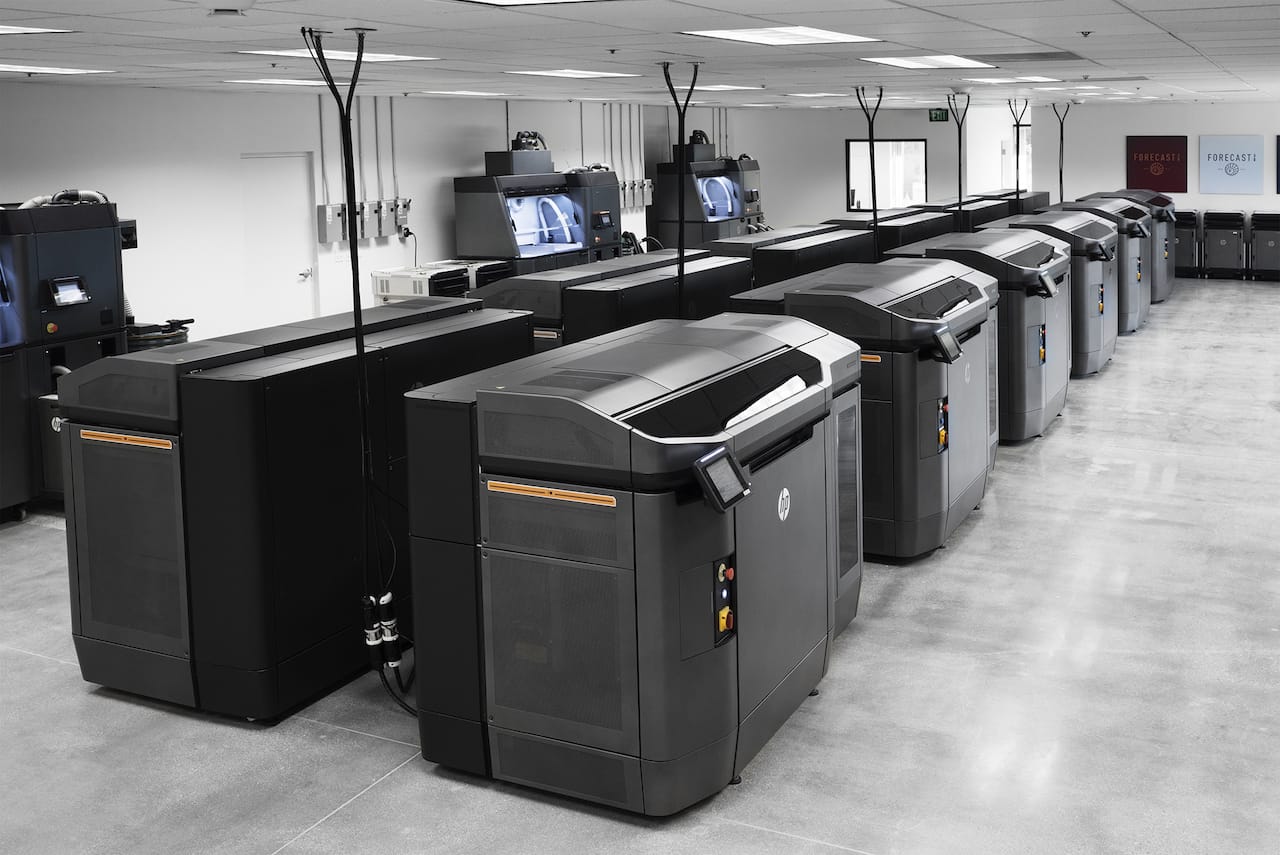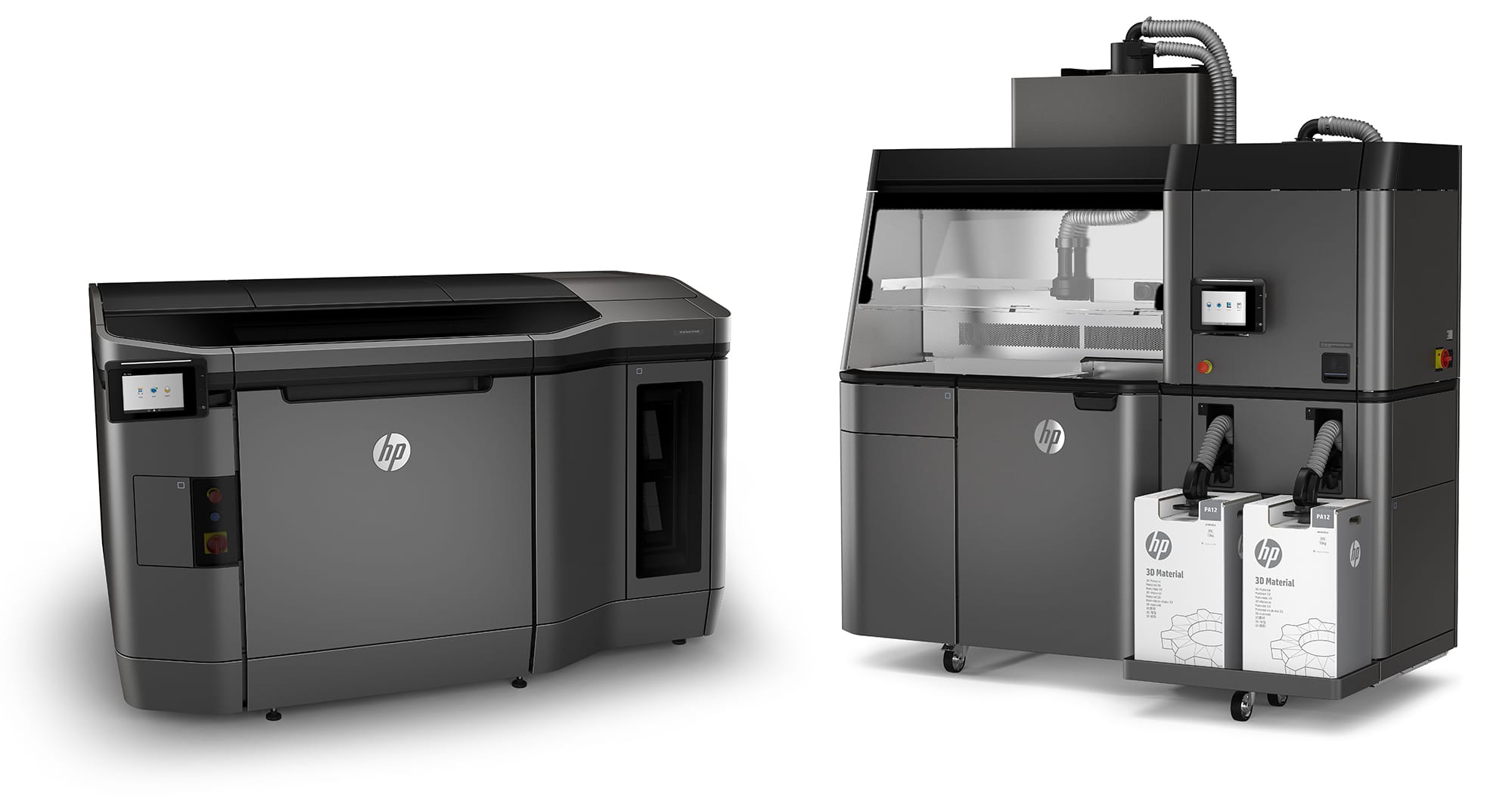
Longtime 3D print service company Forecast 3D is set to launch a new manufacturing center featuring HP 3D print gear.
The California-based service bureau has been producing prototypes for many clients for years using other 3D printing equipment, but now apparently they’re stepping things up quite a bit by launching a production facility. That’s right – production parts.
Their new 21,000sf 3D manufacturing center features no less than 12 HP Jet Fusion 4200’s operating in parallel.

This is quite interesting, because the knock on HP’s equipment has been that the cycle time to run a single unit through can be lengthy, as the removable build chamber can take many hours to cool down for subsequent stages in the manufacturing process. But by operating gangs of machines, Forecast 3D should be able to use the parallel nature of the configuration to dramatically up the volume of 3D printed parts.
Here’s how to look at this: instead of timing a single 3D print through the system as you might when examining a single 3D printer, think of this as a manufacturing black box, in which vast quantities of parts emerge over time. HP says:
With the launch of its 3D Manufacturing Center, Forecast 3D now offers a full-process HP 3D printing and manufacturing solution capable of producing over 600,000 end-use production parts per week, further scaling the dramatic time/cost benefits of Multi Jet Fusion and taking 3D printing to an entirely new level.
That’s an awful lot of parts. Ask yourself this: which other 12 printers could produce 600,000 parts each week? That’s 7,143 parts per day, or about 300 per hour, 24 hours a day. That’s volume.
That’s production. Not prototyping.
And that’s the market I believe HP is targeting for this equipment. While they are certainly a massive company, changes in industry suggest they need to diversify and this seems like a natural addition for them.
However, they do face challenges with competition, particularly Stratasys, who, inconveniently for HP, have locked up exclusive contracts with their resellers, meaning they cannot sell HP equipment. Thus HP is, for the moment, prevented from accessing many of the leading 3D print resellers.
However, there is another way forward: 3D print services. This was a strategy long used by 3D Systems, who populated many service bureaus with their 3D print equipment. Now it might appear that HP is attempting something similar with this move through Forecast 3D.
If it makes sense for Forecast 3D, then it may make sense for other service bureaUS, and that could create a sufficiently large market for HP to more easily access.
Via Forecast 3D

